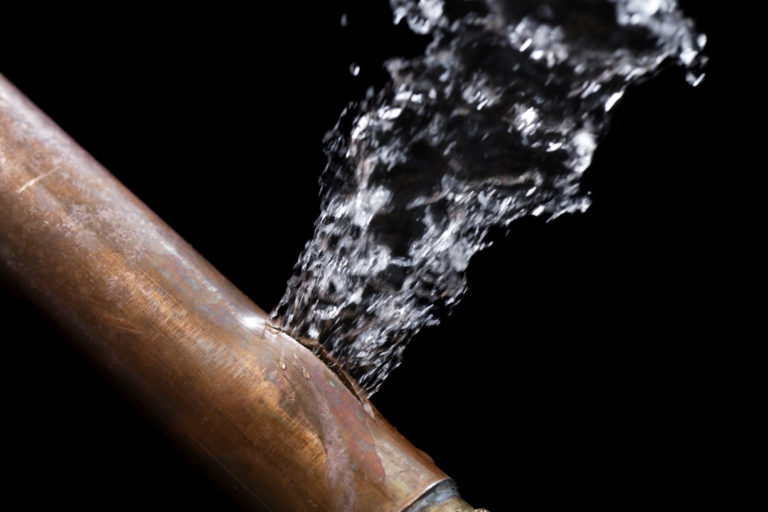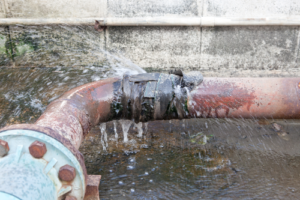Stop the Flood: Strategies for Identifying and Fixing Ruptured Pipes
Stop the Flood: Strategies for Identifying and Fixing Ruptured Pipes
Blog Article
We've come across the article pertaining to What to Know Before Installing a Dishwasher down the page on the net and figured it made perfect sense to share it with you on this site.

A ruptured pipe is a significant emergency; you can only stand as you watch water you pay a lot to reunite with the planet. In worse instances, you observe a pool on your cooking area floor, which is a wonderful trip risk, especially if you have kids around. If the pipe that ruptured was in your wall surfaces, bad news: you might need to paint that entire area.
How can a tragedy like a burst pipeline be avoided and also managed? Well, by paying attention to your professional emergency plumbing professionals and complying with these rules.
Exactly how do I know when my pipes have ruptured?
Varying water stress
Pipes do not simply burst in a day. You might have discovered that your cooking area tap or shower does not run immediately when you turn the tap. It may stop briefly for a couple of seconds and afterwards blast you with more force than common.
In other circumstances, the water might seem typical in the beginning, then decrease in stress after a few seconds.
Infected water
Many people presume a ruptured pipe is a one-way outlet. Rather the contrary. As water spurts of the hole or gouge in your plumbing system, pollutants locate their way in.
Your water may be infected from the resource, so if you can, check if your water storage tank has any kind of problems. However, if your alcohol consumption water is provided and purified by the local government, you need to call your plumber immediately if you see or smell anything funny in your water.
Puddles under pipelines and also sinks
When a pipeline bursts, the outflow develops a pool. It might show up that the puddle is growing in size, as well as despite the amount of times you wipe the puddle, in a few minutes, there's one more one waiting to be cleansed. Usually, you may not be able to trace the puddle to any type of noticeable pipelines. This is an indicator to call a specialist plumber.
Damp wall surfaces and also water stains
Before a pipe bursts, it will leak, a lot of times. If this consistent dripping goes undetected, the leakage might finish right into a vast gash in your pipe. One easy way to avoid this emergency is to look out for wet walls ad water stains. These water stains will lead you right to the leak.
Untraceable dripping noises
Pipe bursts can happen in the most undesirable areas, like within concrete, inside wall surfaces, or under sinks. When your house goes quiet, you might have the ability to listen to an irritatingly consistent leaking noise. Even after you've checked your shower head as well as cooking area faucet, the leaking may continue.
Dear reader, the dripping might be originating from a pipeline inside your wall surfaces. There isn't much you can do regarding that, except tell an expert plumber.
Show up the Warmth
Establish fans to blow heat into cold areas. Maintain the garage door shut. If you have reduced water circulation, warmth one of the most susceptible pipes (usually in cellars and also crawl spaces or near exterior walls) with a hair dryer. Leave the tap on while you use warm. As you melt ice, the circulation will certainly boost. To avoid pipes from freezing, shield your wall surfaces.
Begin Getting Rid of the Water
Grab the wipe, containers and a store vacuum cleaner to start to get rid of the water due to the fact that you definitely don't desire it saturating into every little thing else in your home. Plus, a fast tidy up will lower the possibilities of something getting musty.
What do I do when I find a burst pipeline?
Your water meter will continue to run also while your water wastes. To reduce your losses, locate the primary controls and transform the supply off. The water mains are an above-ground framework at the edge of your building.
How to Fix & Detect a Leaking Pipe
How Do I Know if a Pipe is Leaking?
Leak detection tests can help you determine if your pipe has a leak. Even if you don’t see an apparent leak, you should still conduct leak detection tests regularly to save water and money—and prevent major damage to your home.
Water meter. It can be helpful to figure out what your usual water meter usage numbers are and then monitor them regularly. To monitor your meter, first, turn off all water faucets in your home. Check the meter and write down the numbers. In a few hours, check the meter again. If the numbers have changed, you have a leak. Water gauge. Use a water gauge to test your water pressure. Your showerhead should produce a certain amount of water pressure based on its model and design. If the pressure is lower than it is supposed to be for that specific showerhead, your home likely has a leak. Puddles. Look inside your bathroom, laundry, and kitchen sink cabinets. Puddles around the cabinets or around toilets, tubs, showers, and washing machines indicate the presence of a leaking pipe. You may also notice loose tiles, peeling or flaking paint, or mold caused by water accumulation. Napkin test. Even if you don’t see any puddles, you may still have a leak. You can test for water leaks in the bathroom, laundry, and kitchen by wiping below-sink connections with a napkin, paper towel, or piece of toilet paper. If it becomes damp, you probably have a leaking pipe under the sink. Discolored walls. Walls that are discolored—usually with brown or yellow stains—or bulging might mean that they have been impacted by water damage caused by a leaking pipe. Smell. A leaky pipe will create sitting water, and over time, that water may develop a musty smell. If your home smells musty, but you can’t locate the source, it may be due to a leak. Steps for Fixing a Leaking Pipe
A leaky drain can be remedied by tightening the pipe base, replacing the drain seal, caulking the rim, and tightening the pipe nut. Similarly, a leaking toilet pipe can be treated by tightening the packing nut. You may also need to replace the valve. A leaky faucet may just need tightening or replacement of the washers. If that doesn’t work, consider replacing your faucet. If your pipe has a hole in it, you may want to use a pipe leak sealer or pipe leak tape. This quick fix for water pipe leaks can also temporarily fix a copper pipe leak. https://www.ahs.com/home-matters/quick-tips/how-to-tell-if-pipes-are-leaking/

As an enthusiastic reader on What to Know Before Installing a Dishwasher, I thought sharing that piece was sensible. In case you liked our blog posting if you please make sure you remember to share it. Thanks a lot for going through it.
Book Instantly
Report this page